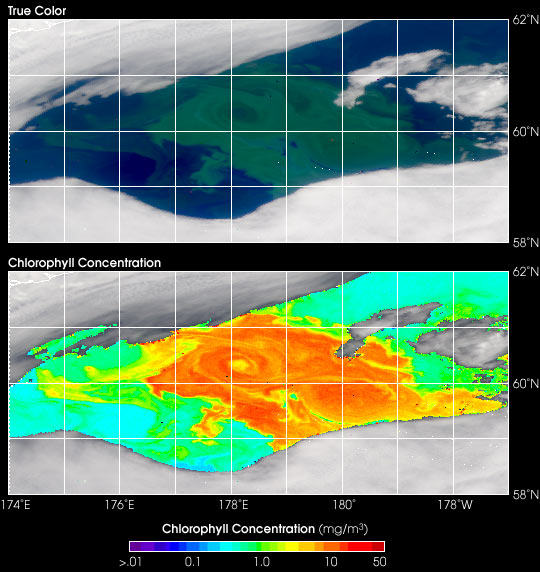


Every year in early summer, the ocean waters of the North Atlantic and North Pacific spring to life with blooms of microscopic plants called phytoplankton. Throughout the winter there is not enough sunlight to sustain large numbers of phytoplankton, even though the water is rich in nutrients. When the days get longer and sunlight becomes more direct, the phytoplankton multiply rapidly. The chlorohpyll in the masses of plants colors the water green.
This bloom in the Bering Sea, south of the eastern tip of Siberia, is visible in true color imagery from the Sea-viewing Wide Field-of-view Sensor (SeaWiFS.) It was taken on June 15th and 16th, 2000. (June 16th east of the Intenational Dateline, June 15th to the west) Although the true color image is spectacular, it does not provide much information about the exact quantity of phytoplankton. SeaWiFS’ mission is to measure the concentration of chlorophyll in the water, which is proportional to the amount of phytoplankton. With this data scientists study the distribution of life in the oceans, the seasonal variability of the oceans, and how the ocean environment is changing from year to year.
For more information, see the SeaWiFS project home page
and What are Phytoplankton?
Image provided by the SeaWiFS Project, NASA/Goddard Space Flight Center, and ORBIMAGE